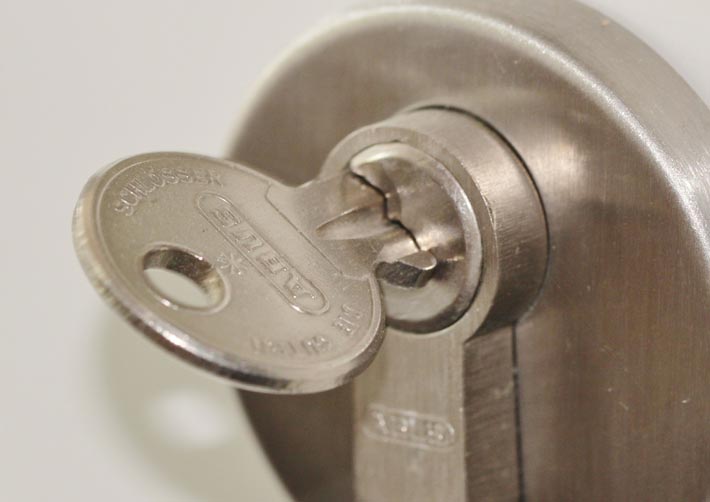Services
It’s not uncommon to hear someone say “Oh, I’m a bit OCD,” when talking simply about tidiness habits or how particular they are about something, but true OCD is more debilitating than simple neatness.
Obsessive-Compulsive Disorder, or OCD, is a long-lasting condition that tends to show up either in childhood, or late teenage and early adulthood. There are three different severity levels used when diagnosing people with OCD: mild impairment, moderate impairment, and severe impairment.
It’s important to note that, while everyone experiences the need to double-check things, and wanting a tidy house isn’t uncommon, having OCD goes beyond those experiences. People with OCD:
Living with OCD doesn’t have to be debilitating. Read on to learn more about OCD and treatment for obsessive-compulsive disorder.
According to the Diagnostic and Statistical Manual of Mental Disorders (DSM-5) OCD
The World Health Organization points to the fact it doesn’t discriminate either between wealthy and developing countries and can be a global burden as a mental disability if there is no treatment provided.
Studies have been done and consideration given to five main factors:
To date, any information is more suggestive than definitive as to the cause. The main focus is on treatment.


In one 2016 clinical study where the participants were shown pictures of typical symptom-triggering images, increased activity in the amygdala was apparent through MRI brain scans. The amygdala is an area of cells in the brain’s limbic region at the base of the brain where emotions are processed; if it is in a hyperactive state for anxiety, increased levels show a triggering of the OCD. This neurologic link is still being studied.
Further, links to neurologic wiring in the brain are shown to have a potential genetic link, with serotonin symptom gene variants in youth studies. This brain chemistry may have genetic origins, as noted when the condition is already diagnosed within a family, according to a 2020 study published in Translational Pediatrics.
Behavioral, based on a possibly learned response, cognitive, and environmental considerations may also be factors behind OCD, according to BeyondOCD.org.
Identifying the behavior for what it is can be incredibly helpful for understanding the nature of the disorder and developing coping mechanisms for a chronic condition.
“OCD is characterized by the presence of obsessions and/or compulsions,” according to the Diagnostic Statistical Manual of Mental Disorders. “Obsessions are recurrent and persistent thoughts, urges, or images that are experienced as intrusive and unwanted, whereas compulsions are repetitive behaviors or mental acts that an individual feels driven to perform in response to an obsession or according to rules that must be applied rigidly.”
The DSM-5 further defines the level of impact OCD might have on a person in terms of time spent (more than one hour is typically defined as impactful) and effect on work/social/family time through avoidance of triggers such as crowds or unhygienic areas.
It can truly impair parts of your life. You may be repeatedly late for work in order to complete your routine and subsequently find yourself out of a job. You may miss dates for potential life partners and find yourself alone. You may miss events important in your children’s lives as you are captive to your obsessive behavior. This is how OCD debilitates and why the person with the disorder finds it frustrating and not harmless at all.

You don't have to battle obsessive compulsive disorder alone. Call SUN Houston today.
At SUN Behavioral Houston, we provide mental health services to treat patients with OCD. Our full continuum of specialized care truly makes us proud to assist Houston and the surrounding communities to solve unmet needs. Call for a telehealth consultation at 713-796-2273.
OCD can also be episodic and be in remission for a time.
Let’s examine the following example of someone’s journey to seek help when he realized his OCD was beginning to really affect his life. This patient realized his anxiety went away briefly by checking the stove burners before he left home, only to recur a few minutes later. It monopolized his thoughts and affected his productivity at work and interrupted his ability to enjoy a fun outing afterward. He realized he was having some kind of mental struggle.
He had an entire protocol related to the task of “checking the burners, front right, back right, front left, back left, one more time” affecting his life. He realized he may have a disorder and needed professional help to find out what was behind his obsession with the burners. Through his presentation of symptoms, his primary care physician recommended he meet with a team that is experienced with OCD, possible diagnosis, and treatment methods.
This patient learned the following during his journey, as many who seek help and their loved ones who support them will also learn through education.

The compulsions behind OCD are manifested in the mind with thoughts, images, and needs in these general areas:
Obsessive OCD symptoms are actions in an attempt to neutralize the compulsive thought and can be shown through the following examples:
Many experts in the field have gone further to categorize the actions into four specific categories:
Patients are often reluctant to volunteer the information that they have OCD symptoms because they are aware their behaviors are extreme. This leads to isolation as they withdraw from environments in work and society, and this can affect their overall well-being as a result. It can take more than a decade to be diagnosed, therefore delaying the treatment of symptoms.
As a result, they may be considered mentally disabled.


Dr. Michael A. Jenike, a psychiatrist and world-renowned OCD expert wrote about clinical practice with OCD in the New England Journal of Medicine in 2004 that three routine screening questions would “greatly increase the likelihood of diagnosis.” He suggested more investigation for OCD consideration should be given if a person said they did the following:
Other field practitioners have noted if the time a person allows daily is over one hour or interrupting their day-to-day life so other commitments cannot be met, these are primary indicators.
While it is a lifelong, chronic condition, its symptoms may ebb and flow in frequency and severity. OCD can be managed through behavioral therapy most effectively among individuals that have a fair amount of insight regarding their emotions and fears and an understanding when that level is not the norm for most people.
Being able to resist compulsions and be free from the disabling behavior is the ultimate goal with OCD treatment. Instead of asking yourself, “Why did this happen to me?” sometimes it can be more productive to focus on “What can I learn from this?”
Easier said than done, right? But with the right therapeutic approaches, your chronic condition can be eased when you learn effective management solutions.
Medications that are typically prescribed for depression may be helpful in OCD treatment, but they are rarely effective alone and it can take weeks to see any effectiveness. Therapy is a valuable tool and is often done in conjunction with medication or alone.
Exposure and response prevention (ERP) and imaginal exposure (IE), habit reversal training, cognitive training, and cognitive therapy are most suggested for treatment by professionals who specialize in OCD therapy. These are all types of cognitive behavioral training (CBT) which is an evidence-based treatment to help a person learn behaviors that give proven strategies for problem-solving.
ERP is a technique where a patient is put in situations that would generally trigger their compulsions, and then they are directed to not act upon them. Generally, the time in which they have to wait will begin as a short period and grow longer over time. An ERP therapist would direct the patient to do the exercise at their own pace. These situations would continue from the least anxious situations to more stressful situations. Through the slow growth and mastery of more difficult levels, the patient can build confidence, eventually leaving the behavior behind or result in a much more tolerable disruption to daily activities.
IE is a technique much like ERP, except the scenarios, are generally visualized before actively doing them. This is better suited for those who are slower to warm up to real-world situations.
Habit reversal training works to make a person more aware of their behaviors and symptom developments and work an opposite movement to disturb completion of the task. This could be done in a mirrored environment where the patient can see themselves acting out the task. The therapist will work to develop a competing strategy, such as using the opposite hand, to retrain a habitual behavior.
Cognitive therapy acts to help you look at behaviors that cause anxiety from a more third-party lens. This helps a person realize their thoughts are not the only ones and perhaps they could be incorrect.
Cognitive behavioral therapy is an evidence-based treatment that helps people with OCD. Exposure and response prevention (ERP) is the sub-category that has been proven most effective for OCD patients. With this type of therapy a professional works with the patient to slowly introduce behaviors by exposing triggering situations and directing the patient not to do the behavior they typically do to temporarily relieve their anxiety. The length of time becomes extended and the situations progress to more stressful situations.
OCD has the ability to ebb and flow throughout a person’s lifetime. About 10% fully recover and another 50% improve with the therapy procedures of CBT and/or antidepressant medication.
There are four types of OCD:
Because there is no cure and OCD is generally chronic, symptoms may come and go but will generally need to be managed throughout a person’s life.
The capable team at SUN Houston has been serving our community for years. Reach out to begin your journey to recovery.